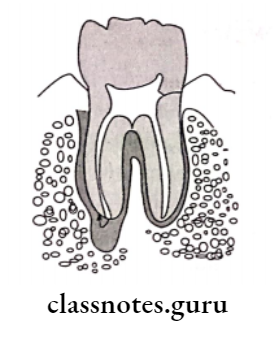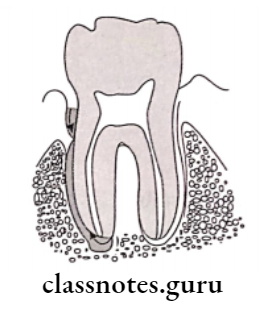Pulpoperiodontal Problems Short Essays
Question 1. Endo-perio lesion.
Answer:

Read And Learn More: Periodontics Question and Answers

Originally endodontic problem with fistulization from the apex and along the root to the gingiva. Pulpal infection can also spread through accessory canals to the gingiva or to the furcation (primary endo lesion)

A periodontal pocket can infect the pulp through a lateral canal and this in turn can result in a periapical lesion (primary periosecondary endo lesion)

A periodontal pocket can deepen to the apex and second- dary involve the pulp (primary percolation)

A long-standing periapical lesion draining through the periodontal ligament can become a secondary complication, leading to a “retrograde periodontitis” (primary endosecon- diary percolation)

Pulpoperiodontal Problems Viva Voce
- The most common cause of the pulpal disease is dental caries
- The organisms being cultured predominantly from the infected root canals are Gram-negative anaerobes
- If the inflammatory lesion of the pulp cannot be resolved even after the elimination of the source of trauma then it is described as irreversible pulpitis
- Sensation from the core of the pulp is initiated by unmyelinated C fibers
- While treating combined periodontal and endodontic lesions, endodontic lesions should be treated first
- A dental abscess with a draining sinus tract indicates a lesion of endodontic origin
